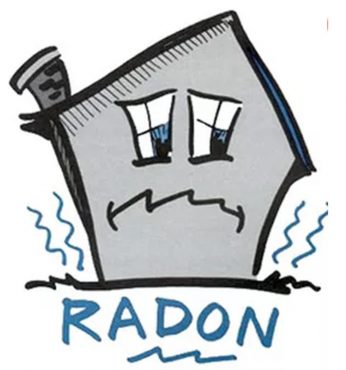
By Casey Edge
Radon and B.C.’s Step Code – A perfect storm (Guest Column)
Canadian ContractorAdd radon gas to the unintended consequences of increased energy efficiency
Guest columnist Casey Edge of the Victoria Residential Builders Association sees trouble ahead, as energy efficient houses increase the risk of radon gas exposure for occupants.
Code changes to boost energy efficiency represent the common thread among three recognized and costly unintended consequences of the past: leaky condos, asbestos insulation and urea formaldehyde. There may be a fourth waiting in the wings – radon gas. Radon gas is responsible for 16 per cent of lung cancers in this country, according to Health Canada.
Radon gas is the result of decaying uranium finding its way into homes through cracks in foundation walls and floor slabs, joints, service pipe gaps, floor drains, etc. It’s a serious problem, and Simon Fraser University is doing leading research into radon in BC, identifying high risk areas previously thought to be low risk. Yet at the same time, while radon knowledge continues to develop, British Columbia continues to push ahead with its energy efficiency program called Step Code.
 The problem is that very energy efficient homes tend to draw in radon gas. One radon testing company says that without radon venting, these homes are a “perfect storm” for the build-up of radon gas. The code solution is subfloor depressurization through a venting pipe.
The problem is that very energy efficient homes tend to draw in radon gas. One radon testing company says that without radon venting, these homes are a “perfect storm” for the build-up of radon gas. The code solution is subfloor depressurization through a venting pipe.
The B.C. government identified some high risk regions that require this passive venting pipe system. However some owners of very energy efficient homes claim a fan is also required to lower their radon levels.
We know the problem, we have a solution. So how could a radon disaster occur?
Like leaky condos, a radon disaster could result from poor government policy, one that allows many municipalities to establish their own radon risk level and energy efficiency level, which they are often not qualified to do.
More investigation into radon gas levels is also needed to clear up inconsistencies. For example, research into Vancouver’s North Shore shows some high levels of radon which in the past has been deemed to be a low risk region by the province.
Is this responsible government policy?
Why would any responsible government enable municipalities to establish their own energy efficiency code as well as their own radon risk level? Of course, no responsible government would, just as no responsible government would sign an agreement to harmonize with the National Building Code, and then turn around and circumvent the National Building Code process by creating and implementing their own energy efficiency policy called Step Code.
The government of British Columbia is now trying to export this poor policy to other provinces through the National Building Code process, a process that B.C. itself ignored. It’s a classic case of the tail wagging the dog.
While energy efficiency ideologues promote the ill-advised Step Code with diminishing returns, contractors and consumers are best to focus on health and safety. We can have affordable, healthy and reasonably energy efficient homes as long as attention is paid to issues like radon gas, combined with education, professionalism and proven practice.
 Casey Edge is CEO of the Victoria Residential Builders Association and a passionate advocate for the home building industry in Canada.
Casey Edge is CEO of the Victoria Residential Builders Association and a passionate advocate for the home building industry in Canada.
Read Casey’s previous posts here…
Political parties are ignoring the issue of asbestos in homes
Education system is key to Canada’s skilled trade shortages
The frightening evolution of Canadian building codes
Advertisement
Print this page

[…] https://www.canadiancontractor.ca/canadian-contractor/radon-and-b-c-s-step-code-a-perfect-storm-gues… […]